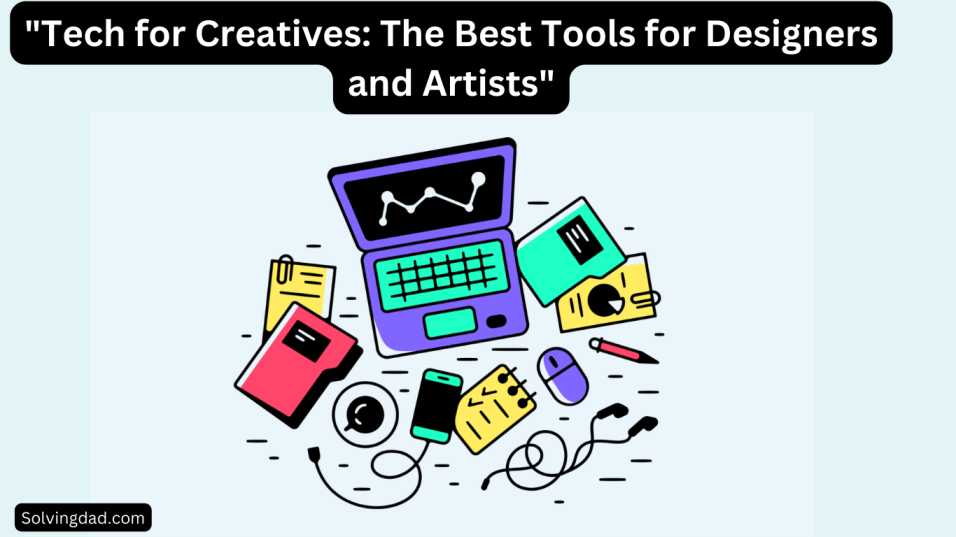There are many different tools that designers and artists can use to create digital artwork. Here are a few popular options:
- Adobe Creative Cloud: This is a subscription-based service that provides access to a wide range of software for graphic design, video editing, web development, and more. Some of the most popular programs in the suite include Photoshop, Illustrator, and InDesign. Photoshop is a raster graphics editor that is widely used for photo editing, retouching, and creating digital artwork. Illustrator is a vector graphics editor that is used for creating logos, icons, and other design elements. InDesign is a layout and page design program that is commonly used for creating print materials like magazines, brochures, and books.
- Procreate: This is a digital illustration and painting app that is available on the iPad. It offers a wide range of brush options, as well as layers, blending modes, and other features that make it a powerful tool for creating detailed artwork. It also has a simple interface that makes it simple to use
- Affinity Designer: This is a vector graphics editor that is similar to Adobe Illustrator. It has a clean interface and is known for being easy to use. It offers a wide range of features for creating logos, icons, graphics, and other design elements.
- Blender: This is a 3D graphics software that is popular for creating 3D models, animations, and visual effects. It is a powerful tool that is used in many different industries, including film, television, and video game development. It has a large user base and is frequently updated with new features.
- Krita: This is a free, open-source painting and drawing program that is well-suited for digital art and concept design. It offers a wide range of brush options, as well as layers, blending modes, and other features that make it a powerful tool for creating detailed artwork. It is compatible with Windows, macOS, and Linux.
- Autodesk Sketchbook: This is a digital drawing and painting app that is available on a variety of platforms, including iOS, Android, and Windows. It offers a wide range of brush options and is known for its intuitive interface. It is a popular choice for artists who want to create digital artwork on the go, as it is available on mobile devices as well as desktop computers.
Advantages
Here are some advantages of using digital tools for creating artwork:
- Increased efficiency: Digital tools can be more efficient than traditional media because they allow you to make changes and adjustments quickly and easily. For example, if you make a mistake in a drawing, you can simply undo it, rather than having to start over.
- Greater flexibility: Digital tools offer a greater degree of flexibility than traditional media. For example, you can easily resize and reposition elements in a digital design, or change the colors and other attributes of an image.
- Easy sharing: Digital artwork can be easily shared with others via the internet, which can be useful for getting feedback or showcasing your work.
- Access to a wider range of tools and effects: Digital tools often offer a wider range of options and effects than traditional media, which can allow you to create more complex and nuanced artwork.
- Cost savings: Digital tools can be more cost-effective than traditional media, especially if you are using a subscription-based service like Adobe Creative Cloud, which gives you access to multiple tools for a single price.
- Greater accessibility: Digital tools are typically more accessible than traditional media, as they can be used on a wide range of devices, including laptops, tablets, and smartphones. This can be especially useful for artists who want to create artwork on the go.
Disadvantages
There are also some potential disadvantages to using tech tools for design and art:
- Dependence on technology: Digital tools rely on technology, which means that you may be unable to create artwork if your device or software experiences technical issues.
- Limited tactile feedback: Some artists may prefer the tactile feedback of traditional media, such as the feeling of a pencil on paper or the texture of paint on canvas. Digital tools can’t replicate this experience.
- Cost: While digital tools can be more cost-effective in the long run, they may have a higher upfront cost than traditional media. For example, purchasing a digital art tablet and software can be more expensive than buying a set of paints and canvases.
- Learning curve: Digital tools can be complex and may require a learning curve in order to use them effectively. This can be time-consuming and may be intimidating for some artists.
- Limited archival properties: Digital artwork is stored electronically and is subject to the risk of data loss or corruption. This can be a concern for artists who want to preserve their work for the long term.
- Lack of originality: Some artists may feel that digital tools lack the uniqueness and originality of traditional media, as it is easier to replicate and manipulate digital artwork.
Conclusion
In conclusion, tech tools can be useful for designers and artists in many ways, including improving efficiency, providing precision, facilitating collaboration, offering portability, and providing versatility. However, it is important to consider the potential drawbacks, such as cost, learning curves, dependency, lack of tactile feedback, and compatibility issues. It’s also a good idea to do some research and compare different tech tools to find the ones that best meet your needs and budget
